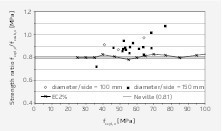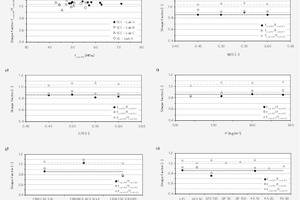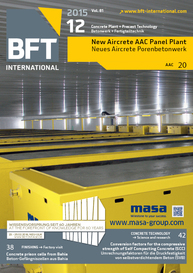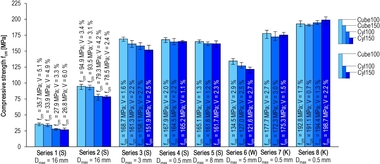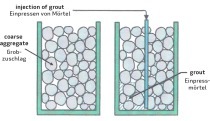Conversion factors for the compressive strength of Self Compacting Concrete (SCC)
Different shapes and dimensions of test specimens are used for the determination of the uniaxial compressive strength of concrete. In order to compare strength results conversion formulas are needed. Those formulas are well-known for vibrated concrete (VC), whereas this is not the case for self-compacting concrete (SCC).
In practice, different standards can be applied for determining the compressive testing of concrete e.g. EN 12390-3, ASTM C39 and AASHTO T 22. Combined, these standards allow the testing of a wide variety of specimens of different shapes and sizes. In order to compare the measured strengths on different samples and to convert them to a design strength, as prescribed in the standards, conversion formulas are needed. In case of vibrated concrete (VC) the influence of specimen size and shape on the measured compressive strength is well documented in various papers and books [1] and [2]. However,...

